Last updated: June 10, 2020
Article
Build Your Own Cannon
Background
How do you protect yourself? Think about all the steps you take to stay safe: wearing a bike helmet, wearing a seat belt, locking your doors at night, supporting your local firefighters, keeping a cell phone close by, etc. What would you do if you had enemies, like pirates, after you?
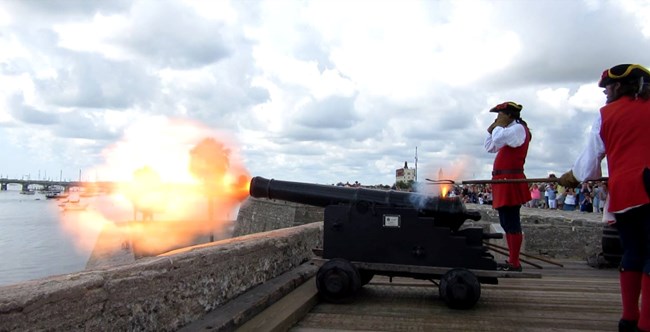
Hundreds of years ago, the people of St. Augustine were determined to protect themselves and their town. They built two coquina artillery forts, Castillo de San Marcos (1672-1695) and Fort Matanzas (1740-1742). No one would be able to attack them without being exposed to their cannon fire. They were also built to resist cannon fire from attacking enemies.
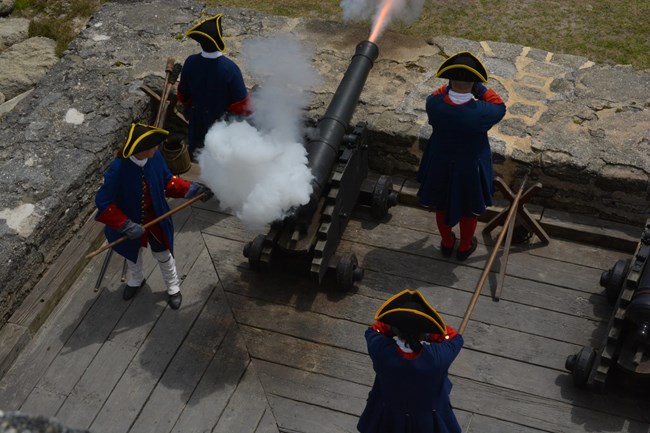
There are 36 pieces of artillery on the grounds of the Castillo, though some may be off for conservation, while at Fort Matanzas there are currently 4 cannons. They were cast, or made, between ca.1690 and 1846 from bronze and iron. Most forts preferred iron because it was cheaper and lighter, though bronze guns lasted longer and if they broke the metal could be reused.
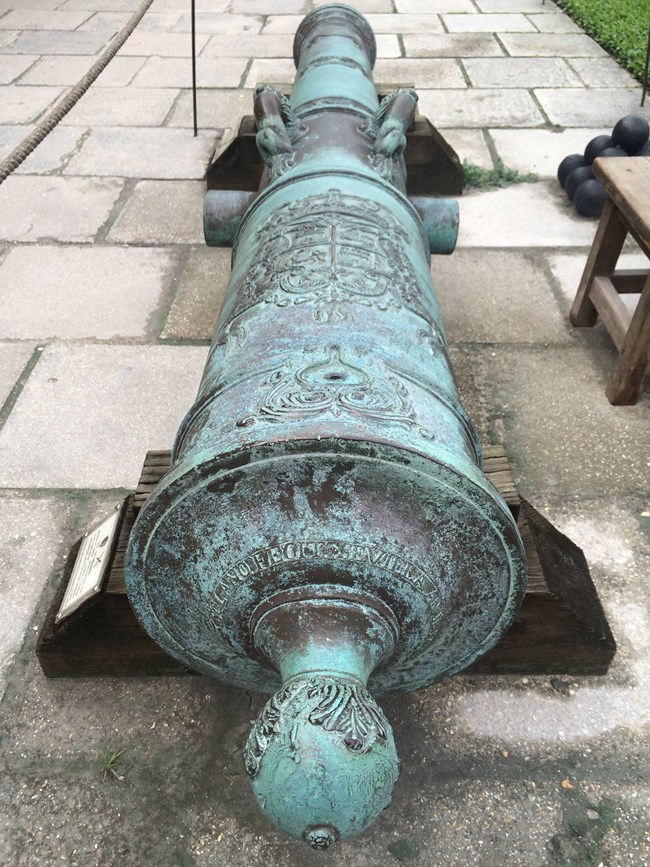
Today you can easily tell the difference between the iron and bronze cannon: the iron ones are black and very plain, while the bronze ones are green and have all sorts of decorations.
The cannons at the Castillo are also a variety of different sizes from a small 2-pounder to the massive 32-pounder, depending on the size of the cannonball they fire. Cannons that fire larger cannonballs have greater range (up to 3.5 miles) and do more damage, but can’t be fired as fast as smaller cannon.
The cannon demonstration in the video below is being performed on a 6-pounder iron cannon that could fire a 6 pound cannon ball (about the size of a baseball) about a 1.5 miles downrange. They are using real gunpowder, but a blank cartridge. The gun crew, dressed up like 1740s Spanish soldiers, are National Park Service Volunteers. Typically, the Castillo hosts these demonstrations every Friday, Saturday, and Sunday. Please check our website before your in-person visit.
Virtually Examine 3D Models of Artillery

University of South Florida
Open this link in a new tab to examine 3D models of the park's artillery and Hot Shot Furnace.
Activity
Right click on the image below to save and print the paper template. Use scissors to cut the picture of the three cut out pieces. You will also need glue or tape to assemble your cannon.
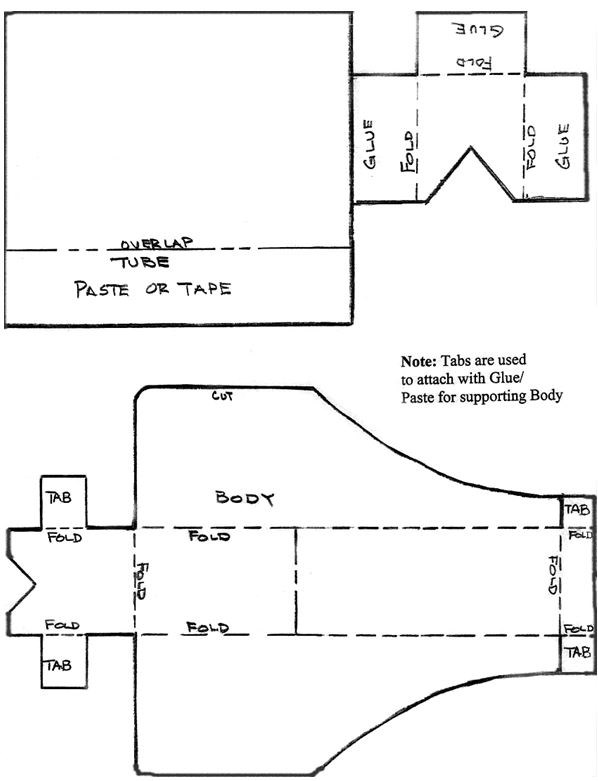
1. Cut all three parts out of sheet by cutting along black lines. (large carriage piece, square for the barrel, and a t-shirt shaped piece to hold barrel in place).
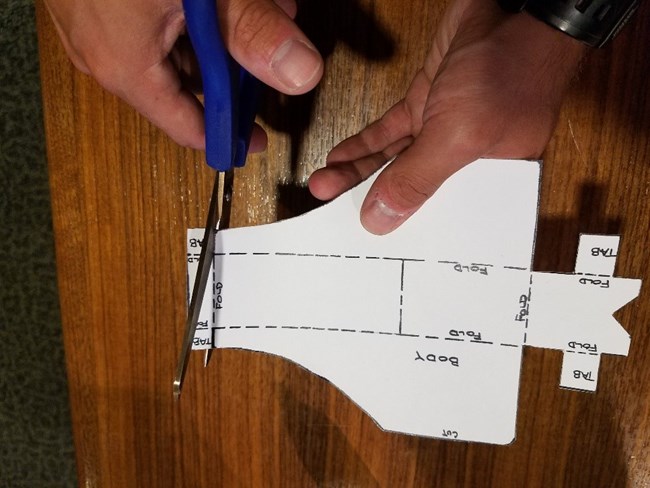

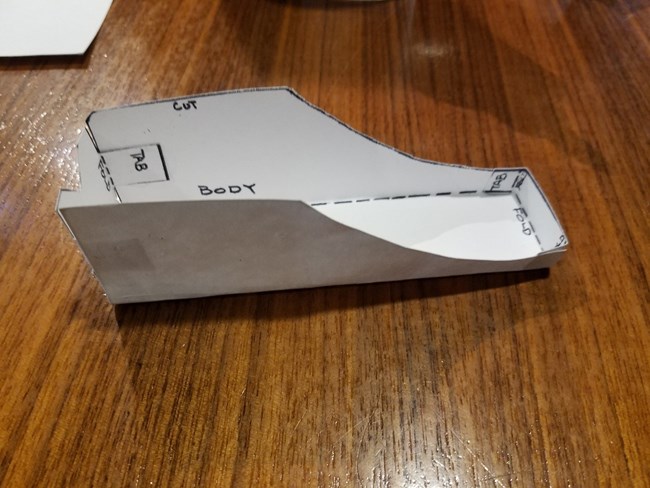

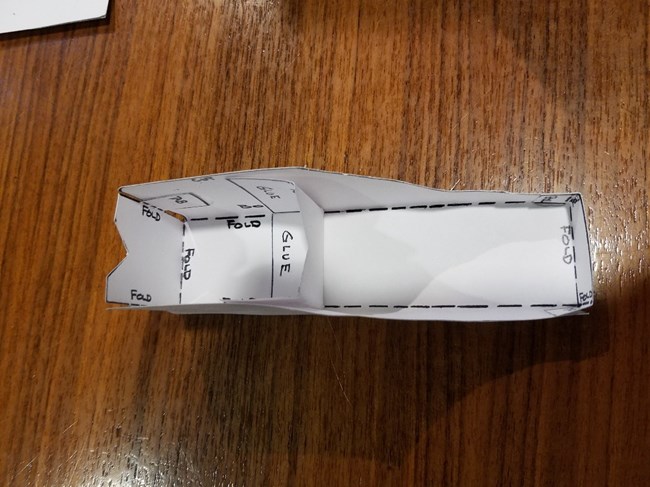
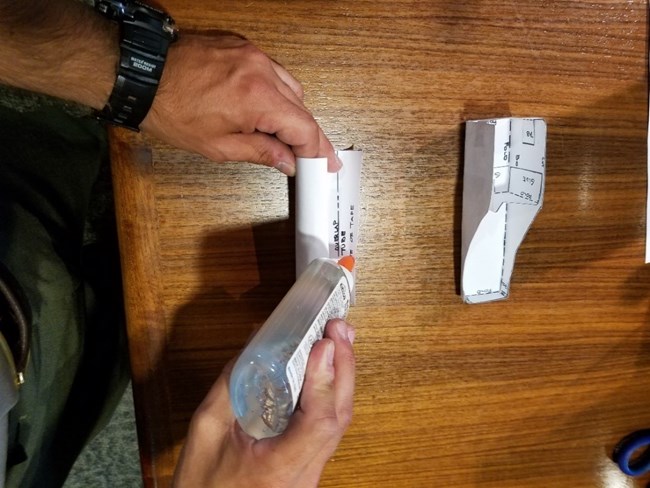
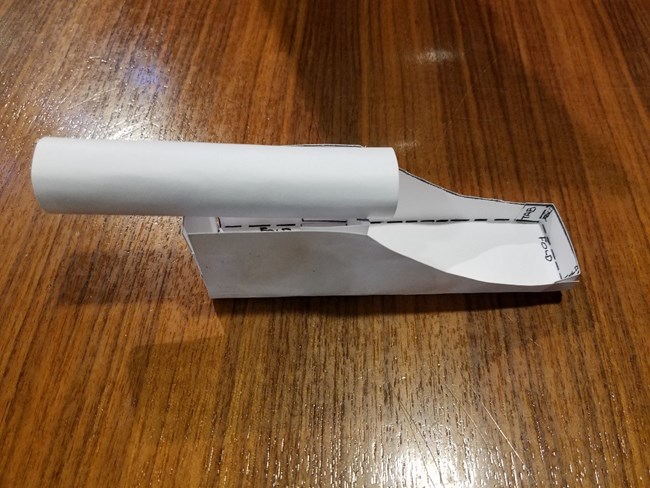
Share and post a picture of your cannon on our Facebook or Instagram. By posting you give us permission to share your design on our website. If you enjoyed learning about cannons, you may also enjoy our Build Your Own Fort or Colonial Games activities.
